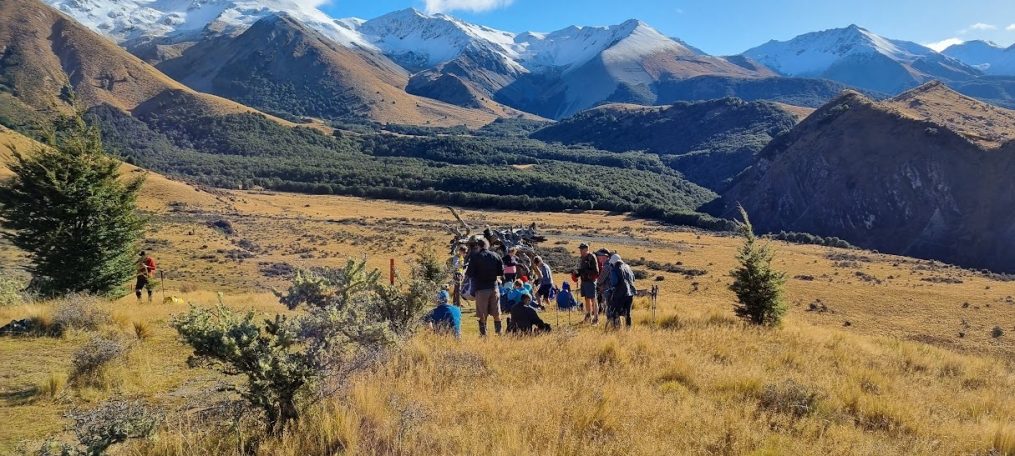| Leader | Mentor | Understudy | Tail Ender | |
| Standards | Warren | Dave R | Catherine L | Shirley B |
| Alternates | Ray B | Norma P | Les G | Marie-Therese |
Distance: 13kms (approx), time: 5hr
On a radiant spring morning we embarked on a lovely tramp to explore some of the captivating landscapes of Banks Peninsula. With 22° forecast promising a warm spring day (the previous 10 day average high was just 14.1), 44 enthusiastic trampers set out. Several trampers had returned from fantastic overseas journeys and Hetty was welcomed back after a difficult year.
The Standards consisting of 24 members set out from Morgans Valley to Lyttelton via Major Hornbrook Track and then on to Urumau Reserve, Evans Pass and down to Sumner. This route promised a day of elevation gain (and pain), panoramic vistas and a touch of wilderness magic. As they traversed the trails trampers were treated to the vibrant hues of spring blossoms.
Meanwhile the Alternates, a lively assembly of 20 members and visitors, opted for a slightly shorter yet equally scenic route. Their journey also led them from Morgans Valley, and then on to Urumau Reserve concluding in picturesque Lyttelton – where there was the opportunity for a well-earned coffee or ice cream.
Native flora was on display including these I’ve since identified (hopefully correctly): mahoe, kōhūhū, akeake, five finger, lemonwood, ngaio, red matipo and Coprosma robusta . While Banks Peninsula also supports unique fauna such as the jewelled gecko, forest gecko and spotted skink these little critters weren’t keen on making obvious their presence.
Both groups revelled in the fine weather and joy of shared experiences. Conversation flowed freely creating a sense of community. Laughter echoed through the valleys and friendships were forged amidst the beauty of Banks Peninsula. As the day unfolded, trampers in both groups marvelled at the diversity of the terrain — from lush forests to open meadows, rocky slopes to serene coastal paths.
The bus picked up the Alternates from Lyttelton and then the Standards in Sumner before heading back to base. The day’s tramp was not just a physical exploration but also a collective celebration of nature, friendship and the spirit of adventure that defines Bishopdale Tramping Club.
Text by Brent (50%) & AI (50%)



















































































